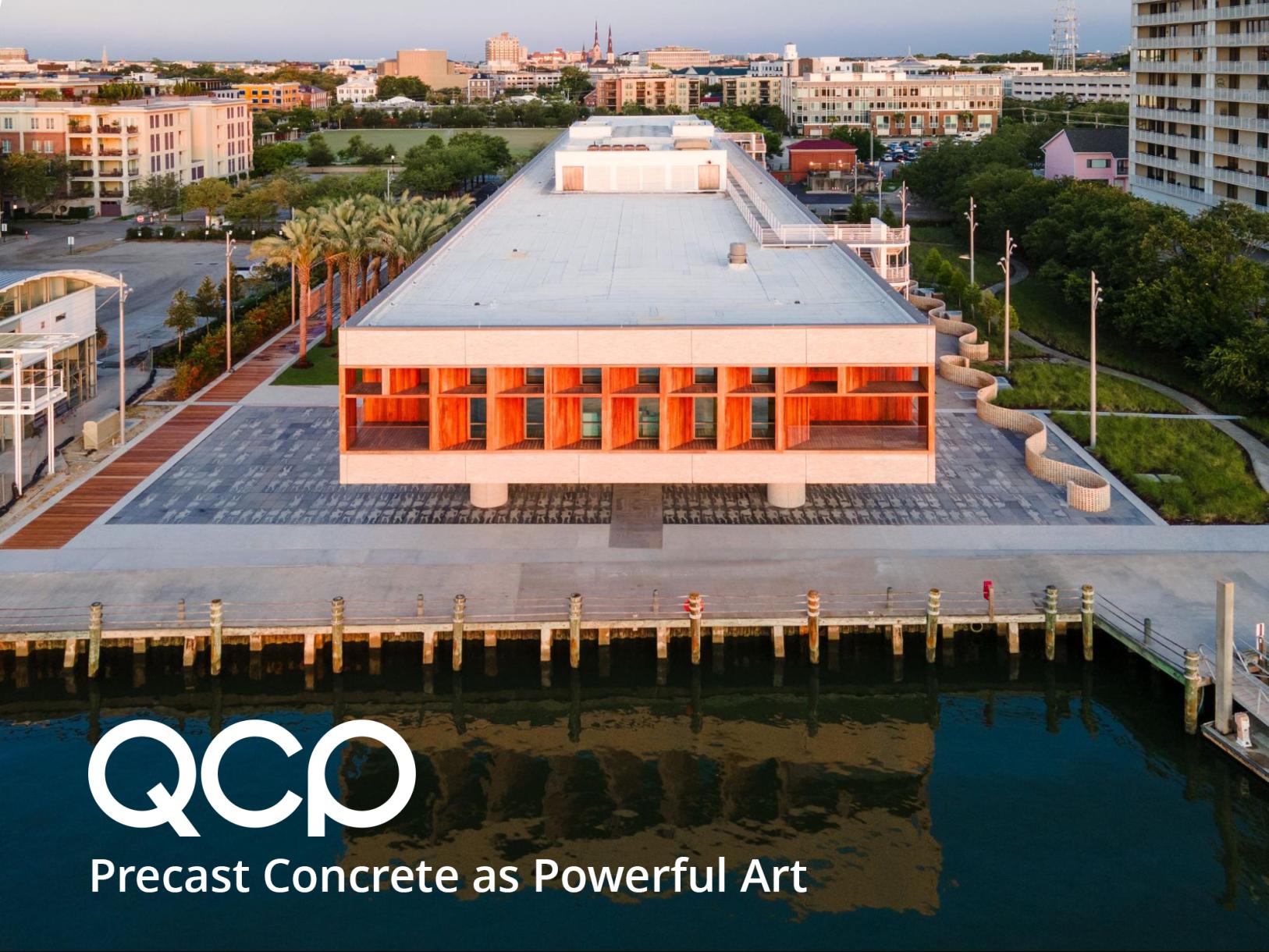
CHARLESTON, SC, November 8 - QCP collaborated with award-winning landscape artist Walter Hood and the team at Hood Design Studio to create two art installations at the International African American Museum in Charleston, South Carolina.
The International African American Museum is located at Gadsden’s Wharf, the port where an estimated 40 percent of enslaved Africans were brought to the United States. The two installations that incorporated precast concrete were the pavers that are part of a water feature design referred to as the Tide Tribute and kneeling figures that were originally carved into clay models by Walter Hood.
“We had already done many custom fabrication jobs with QCP, so it came from word of mouth that they were the go-to company when it came to artistic, precast concrete landscape elements or art elements,” says Sarita Schreiber, an associate at Hood Design Studio. “They're really true partners and collaborators in figuring out how to do things that have never really been done before by a standard concrete company."
The concept behind the pavers was inspired by images of the “Brookes” slave ship diagram, according to Paul Peters, principal at Hood Design Studio. The result is a water feature that measures about 160 feet by 60 feet, and a water pump system by Aqua Design fills and drains to expose the figures set in precast concrete.
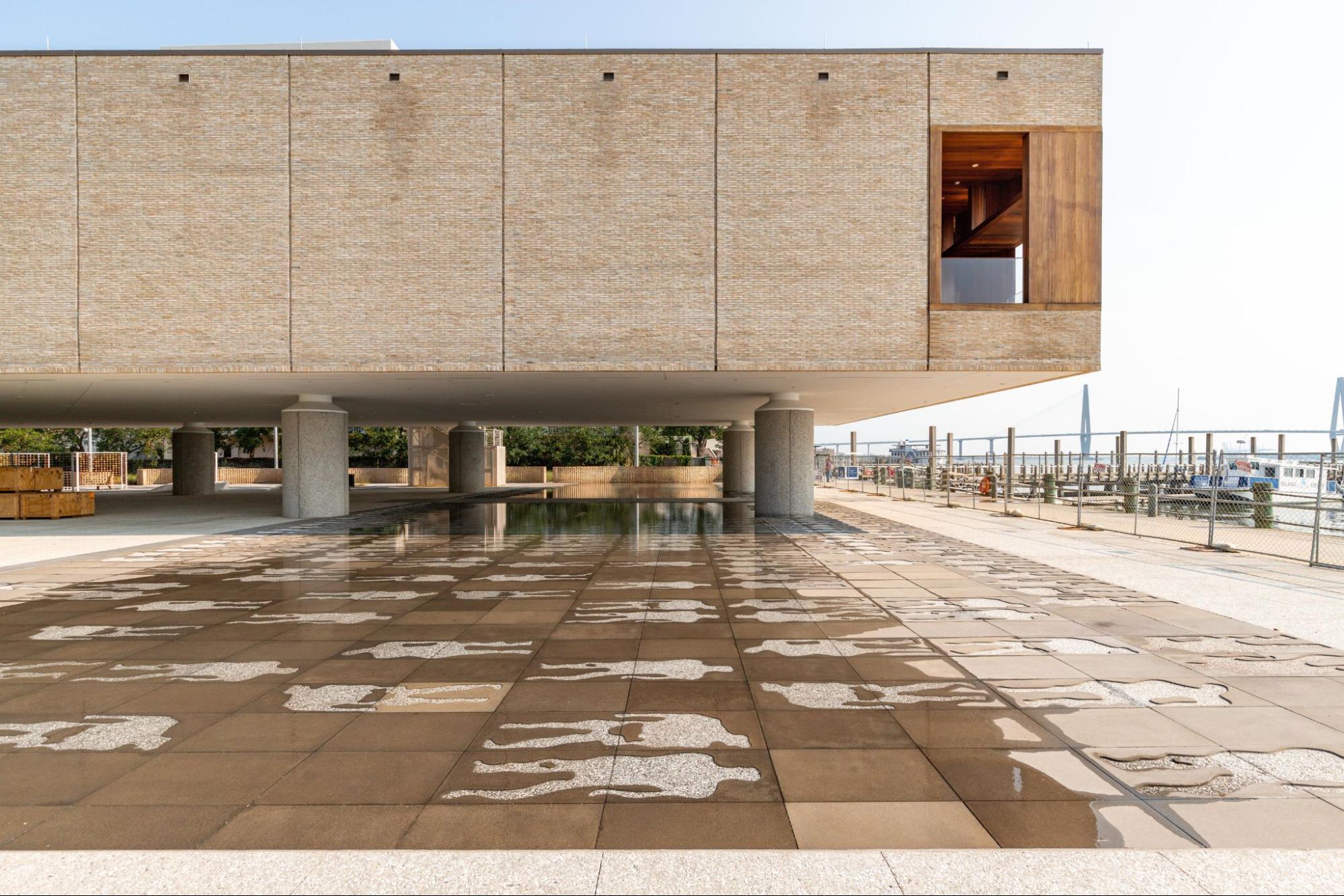
“It's a very complicated water feature in the sense that it only holds a film of water across a large expanse, it's exposed to wind and a lot of light and there's very little tolerance in the design of it,” Peters says. “And so for us, we knew we needed the pavers to be built with a high degree of precision. Aqua Design said, ‘You have 1/16th of an inch of tolerance across.’ Everything needed to be built perfectly, and so we knew we needed to hire the best people.”
Peters also explains how the Hood Design Team envisioned people experiencing the Tide Tribute.
“This kind of ebbing and flowing would happen a few times throughout the day, so there would be a cycle to them,” Peters says. “People arrive at the museum and it's fully concealed and they just see the water. Then, they go through the museum, walk through the gardens and when they come out, maybe an hour or two later, they see a completely different experience.”
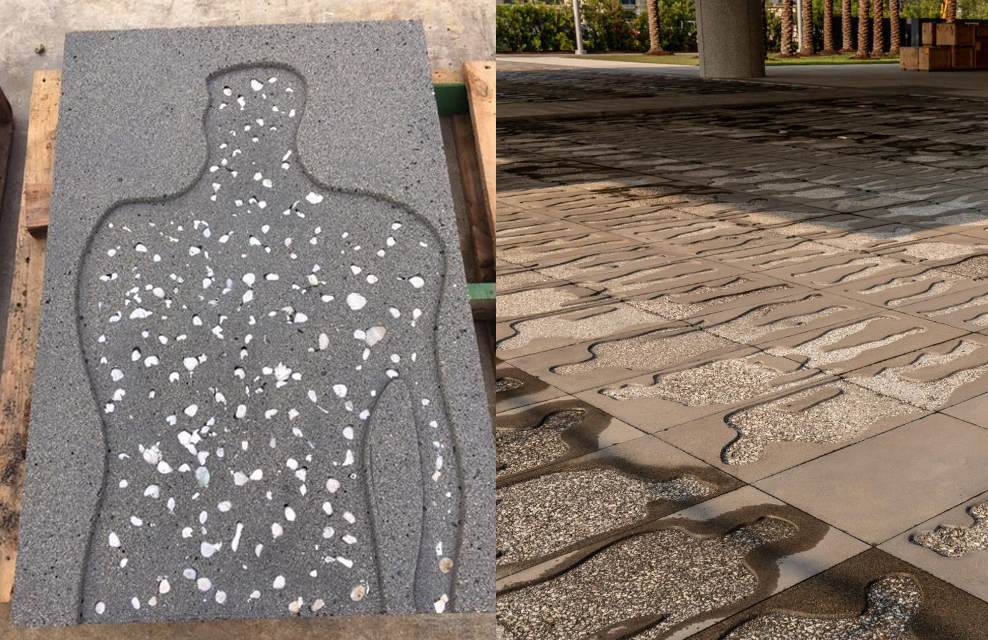
Peters says working with QCP was an iterative process, and one that involved a lot of testing to find the best colors and elements that would work with exposure to both the sun and water pumped through the feature. The goal was also to make the figures look etched out of the pavers, and the team ultimately decided on using seabottom shells.
Neil Elenzweig, QCP’s senior sales consultant, worked directly with the museum and Hood Design Studio throughout this collaborative process. At one point, QCP created mockups showing various levels of coverage using the seabottom shells.
Another part of the museum property is the old storehouse walk, which features five kneeling figures made of precast concrete, representing enslaved people who were once stored there. The figures are positioned along two 8-foot-tall granite walls, and they’re all facing toward the wall for a reflective effect.

“The precast concrete and the form of the sculptures does a great job of speaking to the history of carved stone sculpture, while still maintaining the ease of fabrication and installation,” Schreiber says. “And in general, it captures the textural details that we were looking for, while still holding true to that abstraction that Walter started with.”
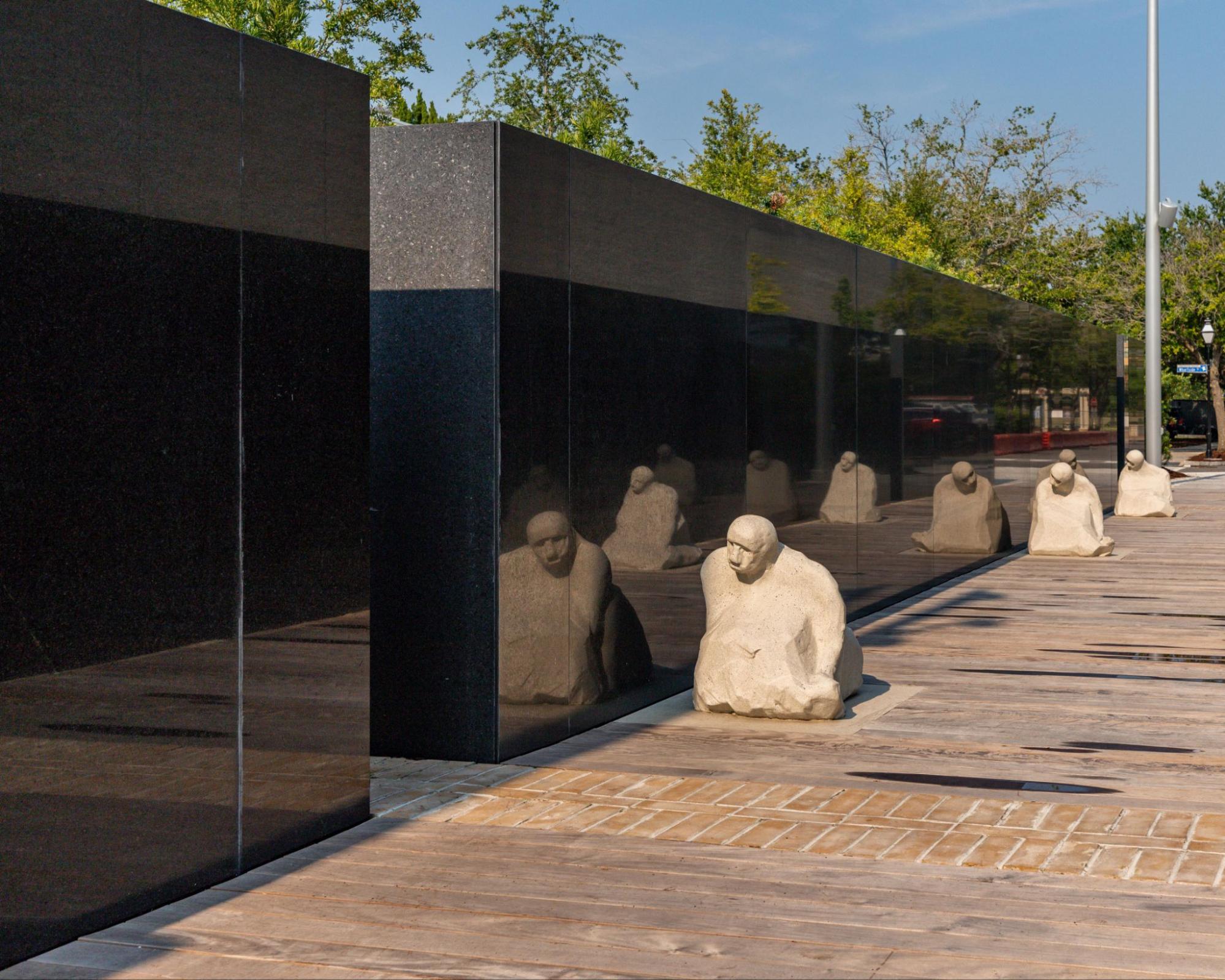
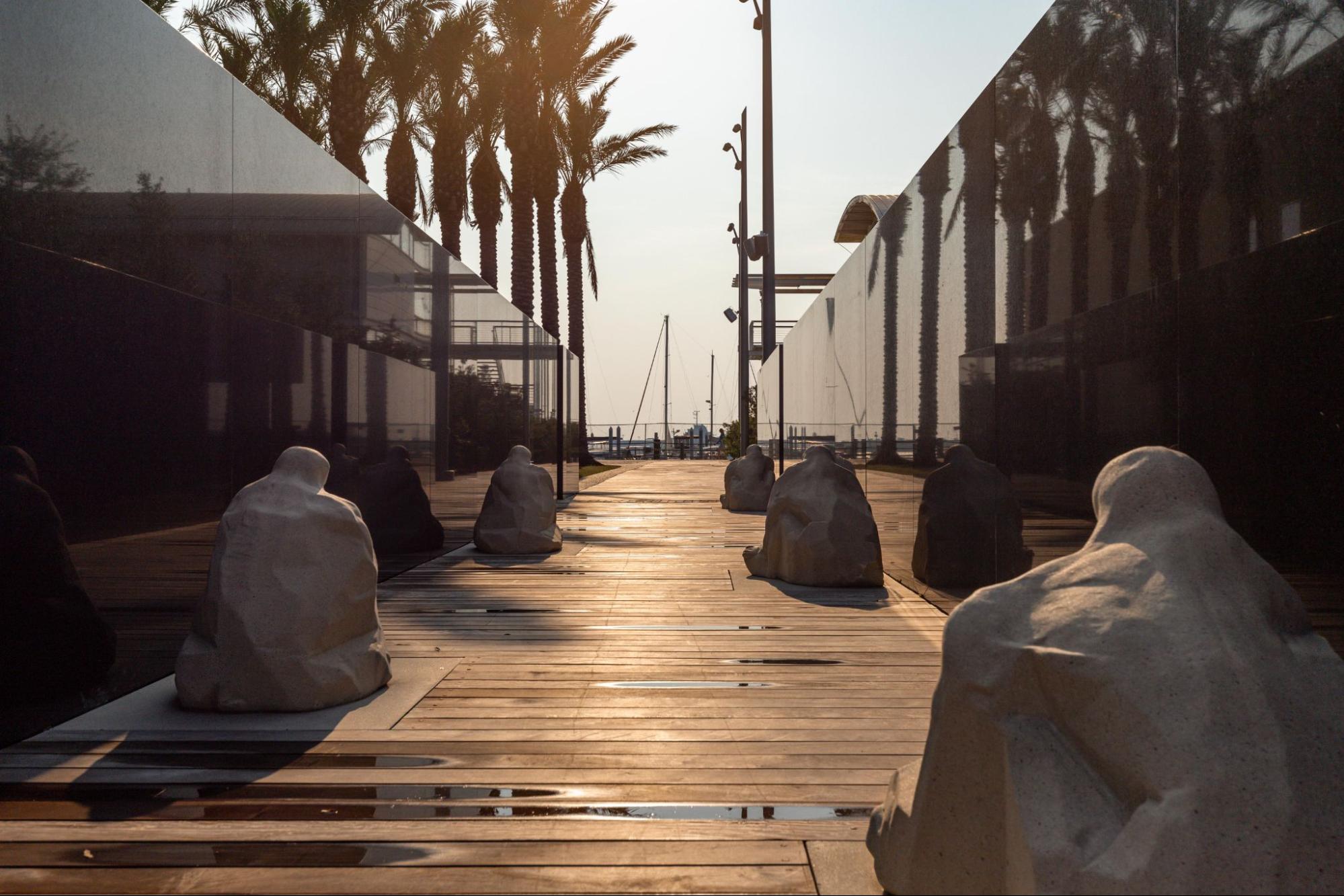
For more information about visiting the International African American Museum, visit their website at iaammuseum.org.
